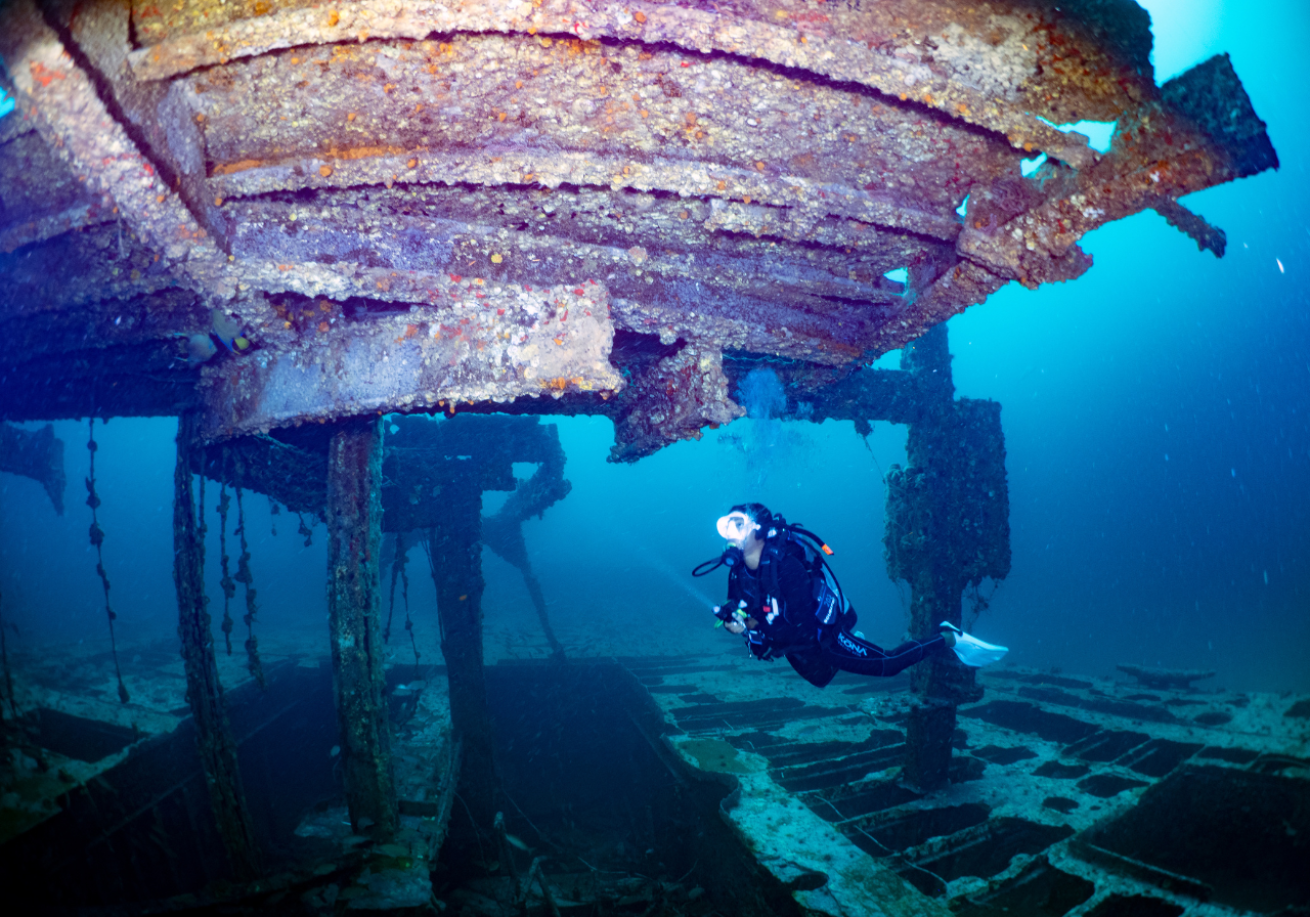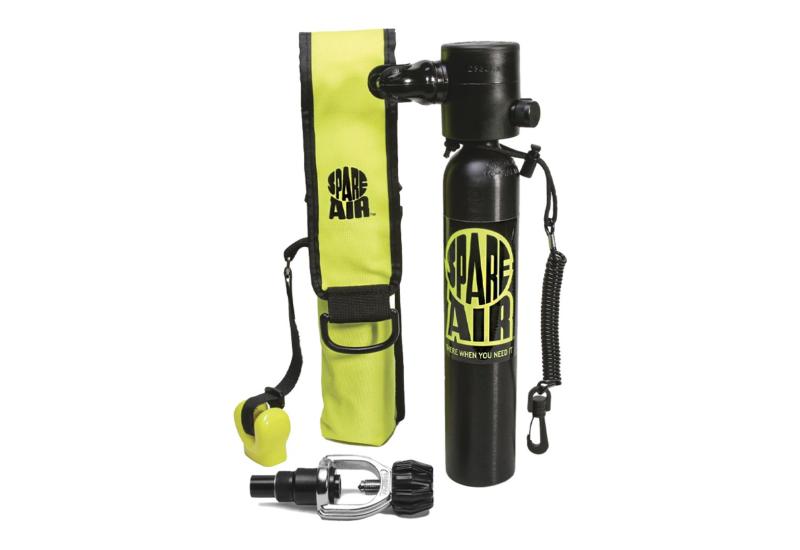Avocet: A Wreck Dive With Never-Ending Surprises

David BenzThe wreck of the Avocet offers a mesmerizing underwater experience with an abundance of pelagic fish.
The wreck of the Avocet enjoyed its spot as an upright, intact artificial reef for just over four years. The 2,640-ton clamshell dredger was deliberately scuttled about 21 miles south-southeast of Pensacola Pass in May 1991. The sinking went off nearly perfectly—stern first, just as planned by David Walter, head of the Reefmaker team responsible for scuttling the ship.
Then Hurricane Opal hit four years later, in October 1995, splitting the 247-foot wreck into two pieces. For divers, it made an exciting dive even better. Now, divers can peer inside to find goliath grouper, vermillion snapper and the occasional Gulf toadfish, as well as spiny and slipper lobster, sheltering in the ship’s interior. Very limited penetration is allowed, but for marine life, there are almost unlimited nooks and crannies for hiding, allowing them to swell in size.
“Every time we see spinies, it’s like grabbing a basketball—they’re just that big,” says Kerry Freeland, owner of Dive Pros, a Pensacola-based scuba center.
But it's the pelagic fish that hold the most appeal for spearfishermen and divers alike. The Avocet sits at 115 feet in the sand, with its deck at 80 feet. By providing structure in deeper water, the artificial reef draws in cobia, amberjack, barracudas, three species of snapper and—unusual for the area—African pompano.
“Huge schools show up and they’re just mesmerizing,” says Freeland. “These fish are really shiny, and with those long streamers trailing from their dorsal and ventral fins, they’re amazing to watch.”
One dive, and you’ll see why the Avocet is a local favorite—and it’s just one of the hundreds of artificial reefs found off the coast of Pensacola. Whether you’re a solo diver or traveling with your dive buddy or family, Pensacola is an ideal vacation destination. Here, sun-kissed beaches meet a charming historic city. With roots dating back to 1559, Pensacola effortlessly blends history, culture and delicious coastal cuisine into an unforgettable experience.

Carl MolitorThe Avocet, sunk in May 1991, lies 21 miles SSE of Pensacola Pass.
Date of Sinking May 1991
Depth 115 feet to the sand
Length (at the time of sinking) 247 feet
Location 21 miles SSE of Pensacola Pass
What You’ll Love This slightly deeper wreck serves as an oasis, attracting a big number and variety of fish, from pelagic swimmers to Gulf toadfish, known locally as mother-in-law fish. Its location farther from shore grants divers better-than-average visibility, often around 60 feet and greater—allowing you to take in more sights all at once.
For More Info Or To Dive The Avocet:
Dive Pros
MBT Divers
Nuihi Dive Charters
Ocean Strike Team
Visit Pensacola










